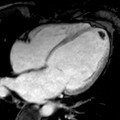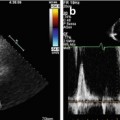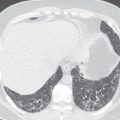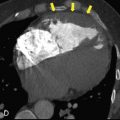Undoubtedly, most individuals at some point or another have undergone X-ray examination. They are usually included in most dental visits—and it’s no coincidence. X-rays provide a way for the dentist to visualize the tissues and structures hidden beneath the gum and tooth surfaces. This helps to detect issues early and plan out the most effective ways of treating them.
Bitewing X-rays and panoramic radiography are the two most frequently taken dental X-rays. Knowing the circumstances under which each is taken will make you feel at ease when it comes to your teeth and will make you understand precisely what your dentist is seeking.
What Is a Panoramic X-ray?
A panoramic X-ray gives a general image of your entire mouth in a single image. All your teeth, both jaws, your jaw joints (TMJ), and even part of your sinuses can be seen. To take the picture, the machine rotates slowly around your head to take a wide, flat image.
This type of X-ray is particularly helpful if your dentist needs to look at entire structures rather than individual teeth. It’s also used routinely to:
- Check the alignment of wisdom teeth
- Plan orthodontic work like braces or aligners
- Detect problems with the jaw, cysts, or abnormalities in the bone
- Evaluate trauma or fractures
- Evaluate sinus issues that affect oral health
Since panoramic X-rays show so much angle, they’re great for showing big or hidden problems. But they can’t show small cavities or differences between teeth. For those, dentists utilize another type of X-ray—bitewings.
What Is a Bitewing X-ray?
A bitewing X-ray shows a closer, more detailed image of a small part of your mouth. You bite down on a small tab (hence the term bitewings) while it is being taken. This allows the dentist to see the upper and lower teeth together, including some areas where decay likes to hide.
Bitewings are particularly useful with:
- Detecting cavities between teeth
- Looking at bone structure to diagnose gum disease early
- Detecting decay under fillings or crowns
- Monitoring teeth changes over time
These are X-rays that most people receive at regular checkups—one X-ray a year, perhaps two. They allow dentists to detect minor issues early on, before they become larger and more painful problems.
The Main Differences Between Panoramic and Bitewing X-rays
Although both of them employ X-ray technology, the images they provide and the purpose of the examination are significantly different.
The most significant difference is the extent of the area covered. Panoramic X-rays give a view of the whole jaw and the mouth in a single picture while Bitewing X-rays scrutinize smaller parts, usually two or three teeth at a time.
A Panoramic X-ray is excellent for identifying bone structure, relationship of jaws, and teeth that are coming in or are already impacted. However, it cannot detect the small cavities or even tiny fractures. Bitewings, on the other hand, provide a close-up view that reveals very fine details including those that lie between the teeth and below.
Bitewing X-rays are taken more frequently as they assist in routine cavity detection and gum disease screening. Panoramic imaging is taken less frequently—maybe every couple of years, or if there is some specific thing that needs to be evaluated, e.g., wisdom teeth or orthodontic planning.
And finally, in exposure to radiation, they are both very safe. Digital X-rays use very little radiation, much less than older systems. Bitewing X-rays tend to use even less exposure since they expose less area.
When a Panoramic X-ray Is the Better Option
If your dentist wants to look into other parts of your mouth, then panoramic X-ray is the one they pick. It’s handy in assessing wisdom teeth, identifying jaw problems, or examining bone structure for major procedures.
In case you are ready to have braces or dental implants, a panoramic X-ray will let your dentist or orthodontist know your teeth, bones, and jaw positioning. It will also disclose cysts, infections, or tumors that smaller X-rays may not show.
According to this Los Angeles dentist, panoramic imaging enables dentists to be capable of “seeing the whole picture—literally. Where bitewings are perfect for spotting tiny cavities, panoramic X-rays become the tool of necessity when we need to view the patient’s overall dental anatomy and look for problems that would not otherwise be visible.”
When Bitewing X-rays Are the Better Option
Bitewing X-rays are the first line of defense in regular dental care. They enable dentists to identify cavities before they become a problem, especially between teeth—spots that aren’t visible to the naked eye.
They also come into play in monitoring gum health. Dentists can utilize bitewings to identify whether bone loss is occurring, which can be an early indicator of gum disease.
Additionally, these X-rays are done to examine the condition of fillings and crowns. Decay sometimes develops under restorations, and a bitewing image can identify it before it is painful or expensive to fix.
Because bitewings are quick, painless, and detailed, they’re a routine component of children’s and adults’ checkups.
Are Dental X-rays Safe?
Dentists follow strict safety guidelines and only take X-rays when it’s really necessary. They usually use protective aprons and collars to minimize exposure.
Bitewing X-rays are taken once or twice a year, as necessary according to your oral health. Panoramic X-rays are less frequent—every couple of years, or when your dentist needs a broader overview for diagnosis or treatment planning.
When to Choose the Right Type of X-ray
Bitewing or panoramic imaging is usually taken depending on your requirement. Your dentist will decide whether bitewing or panoramic imaging is required depending on your age, dental care history, and the purpose of your visit.
If all you need is a checkup or cavity inspection, bitewing X-rays are likely what your dentist will request. If you have a jaw pain, are preparing for braces, or need checkups on your wisdom teeth, a panoramic X-ray will likely be ordered.
And the best part? They work together perfectly. Your dentist can, over time, compare these images to track tooth movement, bone structure, and overall health.
Stay updated, free articles. Join our Telegram channel

Full access? Get Clinical Tree








